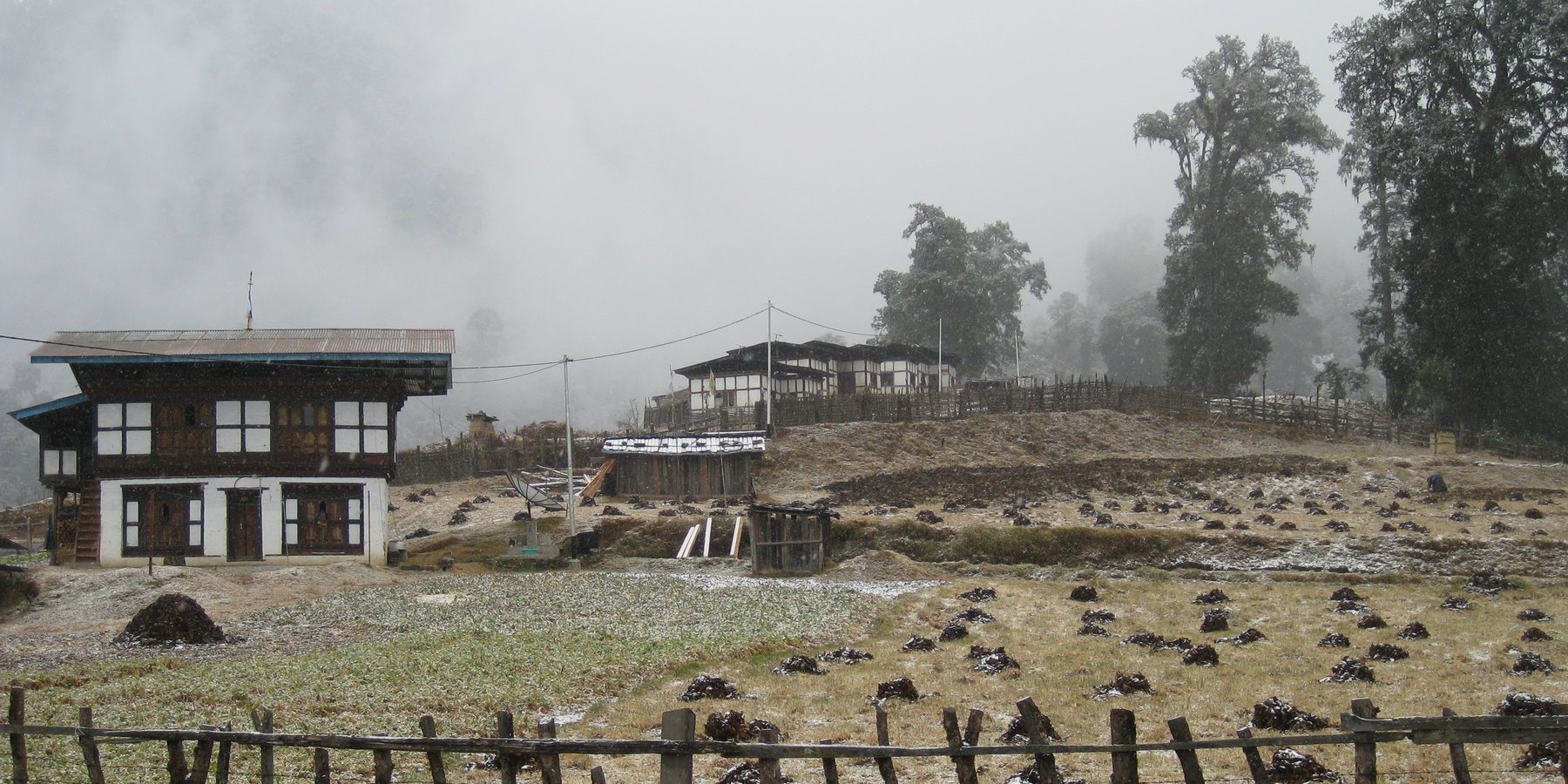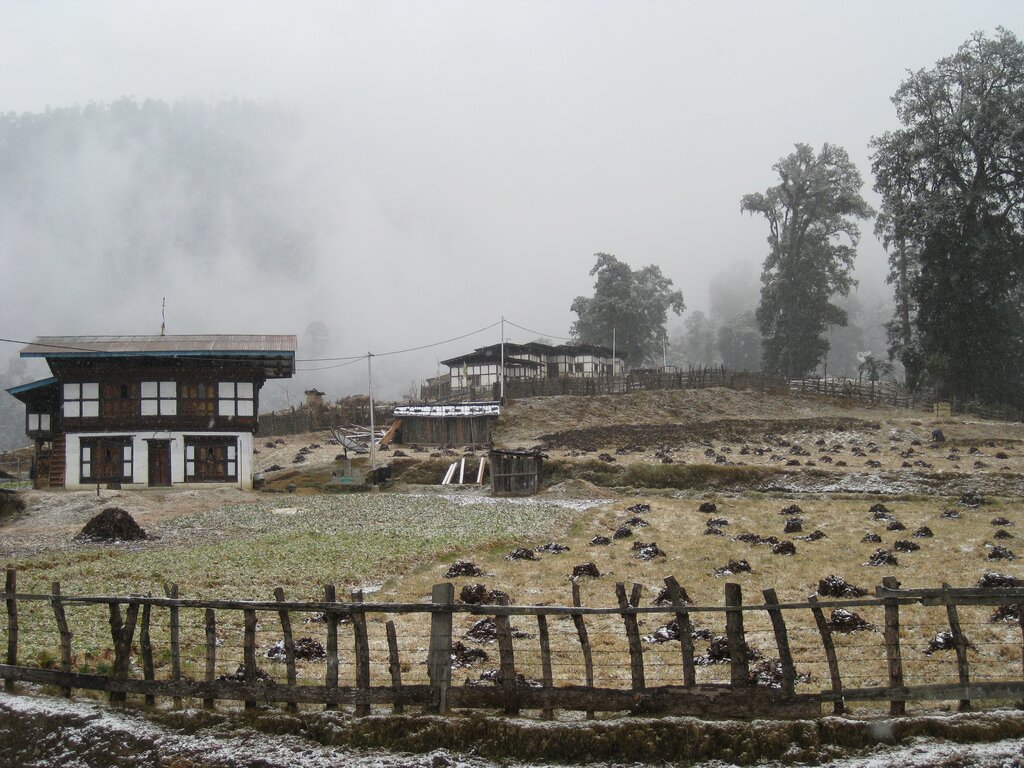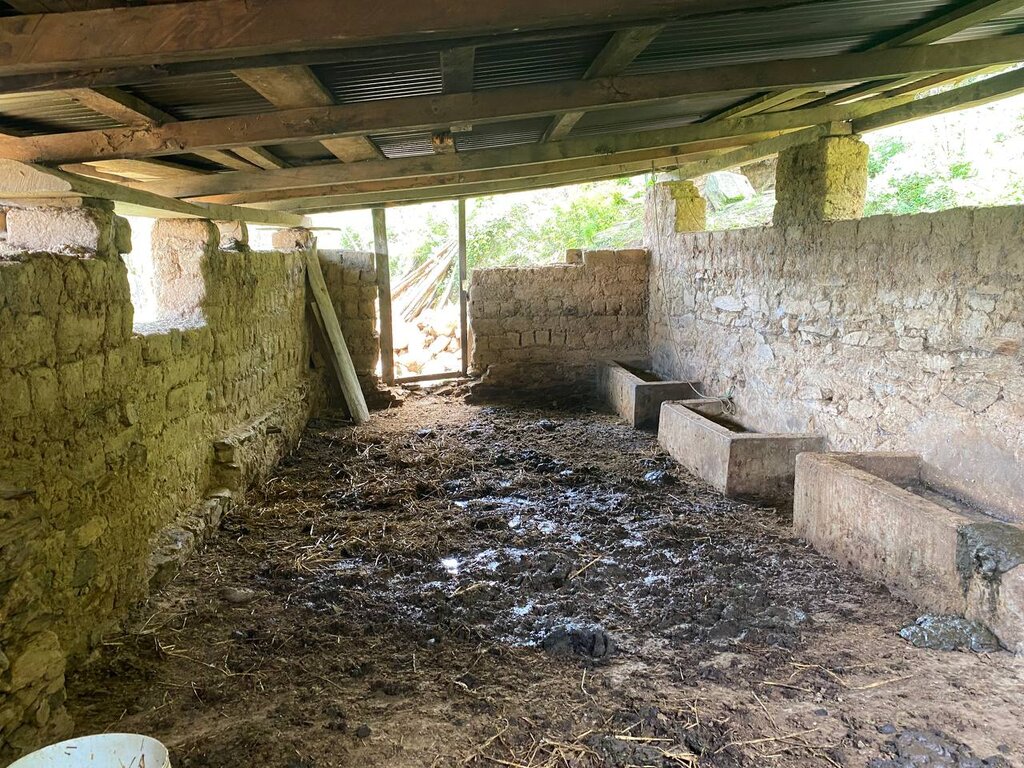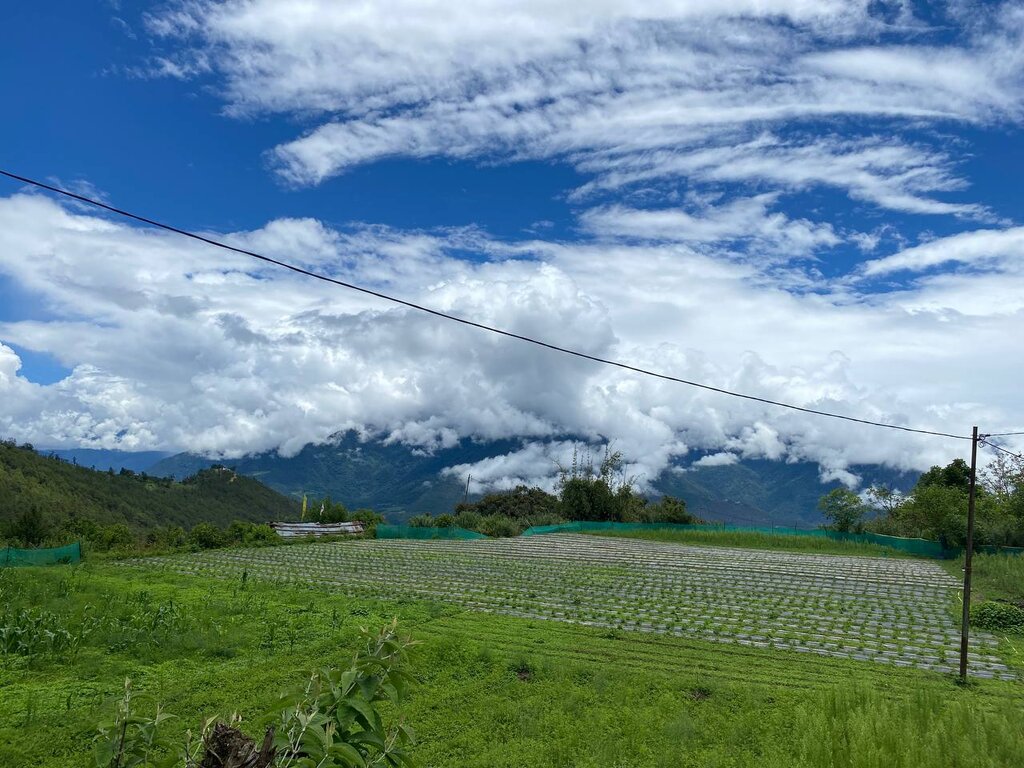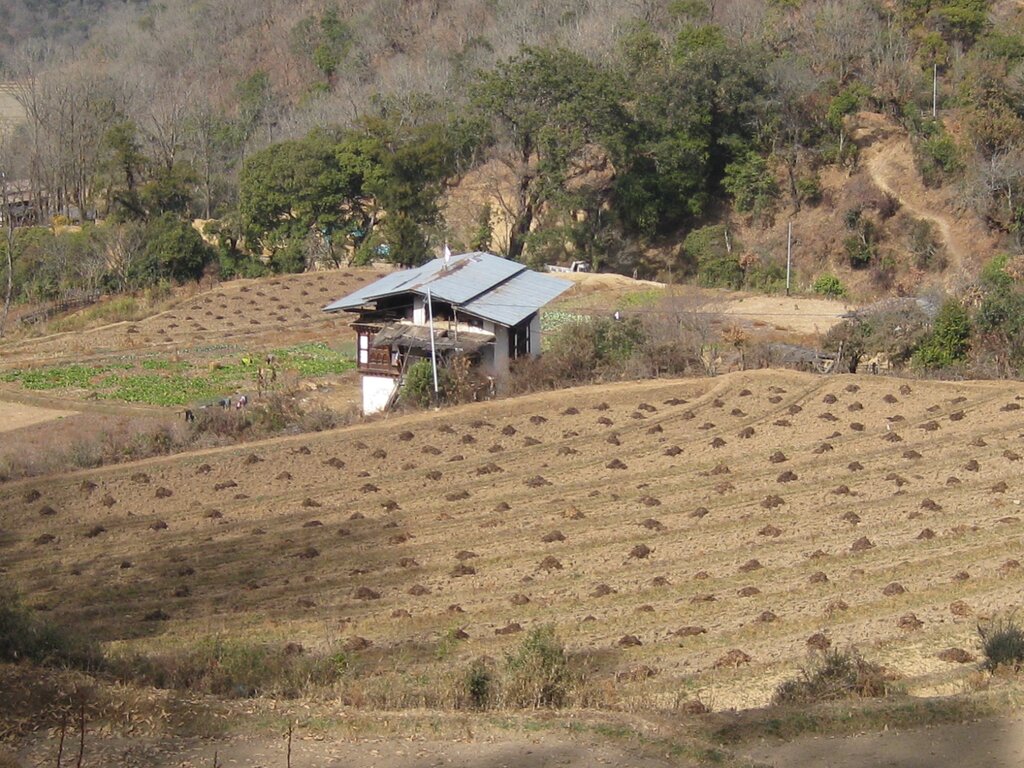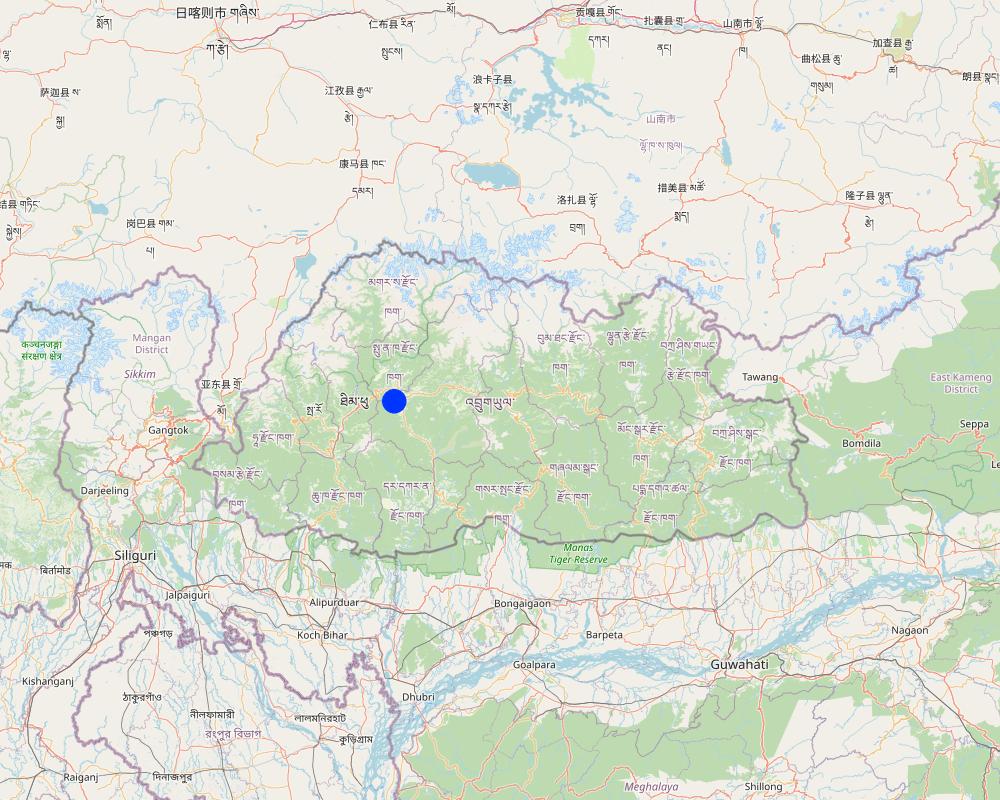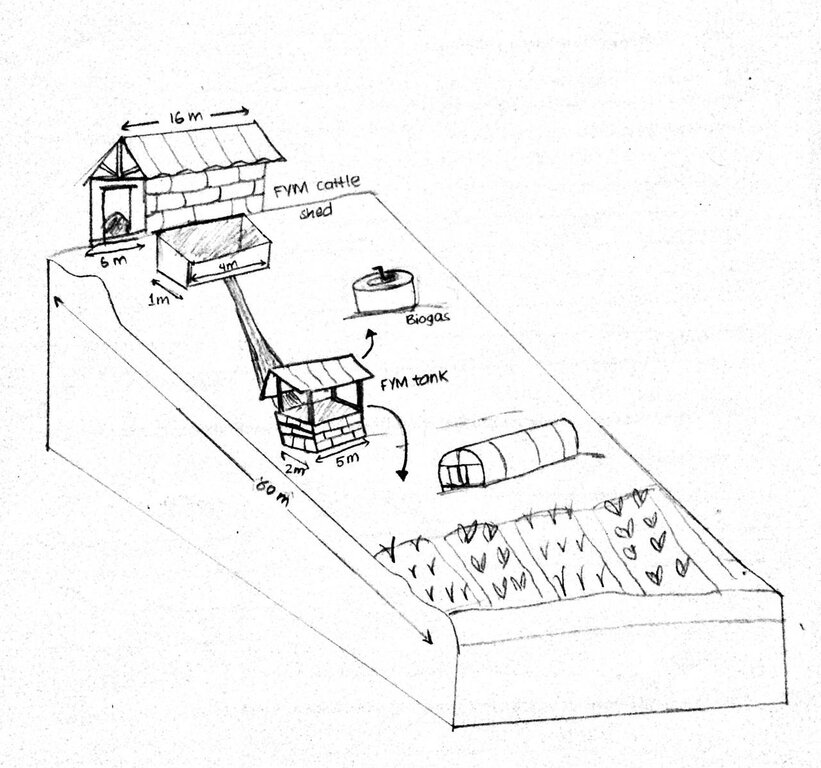Traditional Soil Fertility Management through FYM Application [Bhutan]
- Creation:
- Update:
- Compiler: Karma Wangdi
- Editor: Kuenzang Nima
- Reviewers: William Critchley, Rima Mekdaschi Studer
Norlue Luktey Sa Chue Yardrak Tang Thab (ནོར་ལུད་བླུགས་ཏེ་ ས་བཅུད་ཡར་དྲགས་བཏང་ཐབས།)
technologies_6822 - Bhutan
View sections
Expand all Collapse all1. General information
1.2 Contact details of resource persons and institutions involved in the assessment and documentation of the Technology
Key resource person(s)
land user:
Zam Sonam
Tshokhorthangkha, Khujula, Wangdue phodrang
Bhutan
Name of project which facilitated the documentation/ evaluation of the Technology (if relevant)
Strengthening national-level institutional and professional capacities of country Parties towards enhanced UNCCD monitoring and reporting – GEF 7 EA Umbrella II (GEF 7 UNCCD Enabling Activities_Umbrella II)Name of the institution(s) which facilitated the documentation/ evaluation of the Technology (if relevant)
National Soil Services Centre (National Soil Services Centre) - Bhutan1.3 Conditions regarding the use of data documented through WOCAT
The compiler and key resource person(s) accept the conditions regarding the use of data documented through WOCAT:
Yes
1.4 Declaration on sustainability of the described Technology
Is the Technology described here problematic with regard to land degradation, so that it cannot be declared a sustainable land management technology?
No
Comments:
Since this technology has been practiced from the olden days
2. Description of the SLM Technology
2.1 Short description of the Technology
Definition of the Technology:
Traditional soil fertility management refers to the practice of improving and maintaining soil fertility using organic amendments, specifically farmyard manure (FYM). Other organic materials and crop residues can be effectively utilized through process of decomposition, fermentation and pyrolysis to produce compost, bokashi and biochar respectively.
2.2 Detailed description of the Technology
Description:
Traditional soil fertility management refers to the practice of improving and maintaining soil fertility using organic amendments, specifically farmyard manure (FYM). Farmyard manure is a mixture of livestock excreta, bedding materials, and other organic wastes accumulated in the farmyard. It is typically left to decompose, or it is composted, before being applied to agricultural fields.
FYM application enhances soil fertility by replenishing essential plant nutrients, improving soil structure and moisture retention, increasing microbial activity, and promoting overall soil health. The organic matter in FYM serves as a nutrient source for plants, while also enhancing the soil's ability to retain water and nutrients, reducing erosion, and promoting beneficial microbial activity (Hossain et al., 2021).
Bhutan, a landlocked country nestled in the eastern Himalayas, has a predominantly agrarian economy. Farming practices in Bhutan often involve smallholder farmers who rely on traditional methods of soil fertility management, including the application of farmyard manure. According to Dorji et al., (2018) traditional soil fertility management through FYM application is very common in Bhutan. The use of FYM helps support sustainable agricultural production in the country.
Soil fertility management through FYM application in Bhutan, is conducted as follows. First and foremost, the collection of farmyard manure is essential, which involves the accumulation of livestock excreta, bedding materials, and organic waste in the farmyard. Then the collected material needs to be properly managed and decomposed through composting to ensure the production of high-quality farmyard manure. Adequate storage facilities for the composted manure should be established to prevent nutrient loss and maintain its quality. Additionally, farmers need to be trained and educated on the proper techniques of FYM application, including the optimal timing, rate, and method of application to maximize its effectiveness. Regular monitoring and assessment of soil fertility parameters are crucial to evaluate the impact of FYM application and make necessary adjustments to the management practices (Wangmo, 2020).
Traditional soil fertility management through FYM application in Bhutan offers numerous benefits and positive impacts as already noted. Furthermore, the use of FYM helps to reduce the dependency on synthetic fertilizers, thereby contributing to sustainable agriculture and minimizing the risk of environmental pollution. Overall, traditional soil fertility management through FYM application supports long-term soil health, sustainable agricultural production, and environmental conservation in Bhutan (Gyeltshen, 2020).
2.3 Photos of the Technology
2.4 Videos of the Technology
Date:
10/07/2023
Location:
Nahi, Wangdue Phodrang, Bhutan
Name of videographer:
Niki Rai
2.5 Country/ region/ locations where the Technology has been applied and which are covered by this assessment
Country:
Bhutan
Region/ State/ Province:
Bhutan
Further specification of location:
Nahi, Wangdue Phodrang, Bhutan
Specify the spread of the Technology:
- evenly spread over an area
If precise area is not known, indicate approximate area covered:
- < 0.1 km2 (10 ha)
Is/are the technology site(s) located in a permanently protected area?
No
Comments:
Private land
Map
×2.6 Date of implementation
If precise year is not known, indicate approximate date:
- more than 50 years ago (traditional)
2.7 Introduction of the Technology
Specify how the Technology was introduced:
- as part of a traditional system (> 50 years)
Comments (type of project, etc.):
This technologies that have been in use for generations
3. Classification of the SLM Technology
3.1 Main purpose(s) of the Technology
- improve production
- reduce, prevent, restore land degradation
- preserve/ improve biodiversity
- create beneficial economic impact
3.2 Current land use type(s) where the Technology is applied
Land use mixed within the same land unit:
Yes
Specify mixed land use (crops/ grazing/ trees):
- Agro-silvopastoralism

Cropland
- Annual cropping
Annual cropping - Specify crops:
- cereals - rice (upland)
Annual cropping system:
Maize or similar rotation with hay/pasture
Number of growing seasons per year:
- 1
Specify:
mostly annual crops are grown
Is intercropping practiced?
Yes
If yes, specify which crops are intercropped:
Maize + Beans
Is crop rotation practiced?
Yes
If yes, specify:
Rice- chili- Legumes- cereals
Comments:
Annual cropping is done
3.3 Has land use changed due to the implementation of the Technology?
Has land use changed due to the implementation of the Technology?
- No (Continue with question 3.4)
Land use mixed within the same land unit:
No

Cropland
- Annual cropping
Annual cropping - Specify crops:
- cereals - rice (upland)
Annual cropping system:
Maize or similar rotation with hay/pasture
Is intercropping practiced?
Yes
If yes, specify which crops are intercropped:
Chili + Cabbage + Beans
Is crop rotation practiced?
Yes
If yes, specify:
Maize- Chili- cole crops
3.4 Water supply
Water supply for the land on which the Technology is applied:
- mixed rainfed-irrigated
Comments:
Irrigation through Smart irrigation provided by gewog. Smart irrigation refers to the application of advanced technologies such as drip and sprinkler irrigation to efficiently deliver the right amount of water to crops at the right time, minimizing water waste, conserving resources, and maximizing crop yield.
3.5 SLM group to which the Technology belongs
- rotational systems (crop rotation, fallows, shifting cultivation)
- integrated crop-livestock management
- integrated soil fertility management
3.6 SLM measures comprising the Technology

agronomic measures
- A2: Organic matter/ soil fertility

management measures
- M3: Layout according to natural and human environment
Comments:
This technology comprises of Agronomic measures and management measures
3.7 Main types of land degradation addressed by the Technology

chemical soil deterioration
- Cn: fertility decline and reduced organic matter content (not caused by erosion)

physical soil deterioration
- Pc: compaction

biological degradation
- Bh: loss of habitats
- Bl: loss of soil life
3.8 Prevention, reduction, or restoration of land degradation
Specify the goal of the Technology with regard to land degradation:
- prevent land degradation
- reduce land degradation
4. Technical specifications, implementation activities, inputs, and costs
4.1 Technical drawing of the Technology
Technical specifications (related to technical drawing):
Technical specifications as in the diagram above
Author:
Niki Rai
Date:
09/07/2023
4.2 General information regarding the calculation of inputs and costs
Specify how costs and inputs were calculated:
- per Technology unit
Specify dimensions of unit (if relevant):
5 acre
other/ national currency (specify):
Ngultrum
If relevant, indicate exchange rate from USD to local currency (e.g. 1 USD = 79.9 Brazilian Real): 1 USD =:
82.0
Indicate average wage cost of hired labour per day:
800
4.3 Establishment activities
| Activity | Timing (season) | |
|---|---|---|
| 1. | Site selection | Winter |
| 2. | Construction of cow shed | After site selection |
| 3. | Collection of FYM near the cow shed | regular basis |
| 4. | Washing off the by products into the pit | Every morning |
| 5. | Placement of FYM in the field | Before cultivation |
| 6. | Application of FYM in the field during cultivation | Before cultivation |
Comments:
Government provided fund for the construction of cow shed including CGI sheets and cements
4.4 Costs and inputs needed for establishment
Comments:
The construction materials are partially funded by the government
4.5 Maintenance/ recurrent activities
| Activity | Timing/ frequency | |
|---|---|---|
| 1. | Wood change | Where there is damage due to heat and rain |
| 2. | CGI sheet change | Where there is damage due to heat and rain |
| 3. | Cement | For maintainance |
Comments:
22 CGI sheets and 5 bags of cement were provided by gewog for maintainance
4.6 Costs and inputs needed for maintenance/ recurrent activities (per year)
| Specify input | Unit | Quantity | Costs per Unit | Total costs per input | % of costs borne by land users | |
|---|---|---|---|---|---|---|
| Labour | labor | per head | 6.0 | 500.0 | 3000.0 | 100.0 |
| Equipment | spade | nos. | 2.0 | 100.0 | ||
| Equipment | pickaxe | nos. | 2.0 | 100.0 | ||
| Equipment | Crowbar | nos. | 2.0 | 100.0 | ||
| Equipment | 100.0 | |||||
| Equipment | 100.0 | |||||
| Construction material | Wood | nos | 5.0 | 350.0 | 1750.0 | 100.0 |
| Construction material | CGI sheet | nos. | 22.0 | |||
| Construction material | cement | kg | 250.0 | |||
| Total costs for maintenance of the Technology | 4750.0 | |||||
| Total costs for maintenance of the Technology in USD | 57.93 | |||||
Comments:
Wages for labor was paid by the land user whereas the construction materials were funded by the government
4.7 Most important factors affecting the costs
Describe the most determinate factors affecting the costs:
Financial and labor charge including working lunch
5. Natural and human environment
5.1 Climate
Annual rainfall
- < 250 mm
- 251-500 mm
- 501-750 mm
- 751-1,000 mm
- 1,001-1,500 mm
- 1,501-2,000 mm
- 2,001-3,000 mm
- 3,001-4,000 mm
- > 4,000 mm
Specify average annual rainfall (if known), in mm:
3733.00
Specifications/ comments on rainfall:
In July precipitation reaches at peak, with an average of 713 mm
Indicate the name of the reference meteorological station considered:
NCHM
Agro-climatic zone
- humid
Warm temperate zone, One of the Bhutans agro climatic zone
5.2 Topography
Slopes on average:
- flat (0-2%)
- gentle (3-5%)
- moderate (6-10%)
- rolling (11-15%)
- hilly (16-30%)
- steep (31-60%)
- very steep (>60%)
Landforms:
- plateau/plains
- ridges
- mountain slopes
- hill slopes
- footslopes
- valley floors
Altitudinal zone:
- 0-100 m a.s.l.
- 101-500 m a.s.l.
- 501-1,000 m a.s.l.
- 1,001-1,500 m a.s.l.
- 1,501-2,000 m a.s.l.
- 2,001-2,500 m a.s.l.
- 2,501-3,000 m a.s.l.
- 3,001-4,000 m a.s.l.
- > 4,000 m a.s.l.
Indicate if the Technology is specifically applied in:
- not relevant
5.3 Soils
Soil depth on average:
- very shallow (0-20 cm)
- shallow (21-50 cm)
- moderately deep (51-80 cm)
- deep (81-120 cm)
- very deep (> 120 cm)
If available, attach full soil description or specify the available information, e.g. soil type, soil PH/ acidity, Cation Exchange Capacity, nitrogen, salinity etc.
Soil Type: Sandy clay loam
MC (%): 6.31
OM (%): 7.58
OC (%): 4.41
pH (H20): 6.69
EC (µs/cm): 1090
N (%):0.22
P (ppm):2.87
K (mg/100ml:562.4
5.4 Water availability and quality
Ground water table:
5-50 m
Availability of surface water:
good
Water quality (untreated):
good drinking water
Water quality refers to:
surface water
Is water salinity a problem?
No
Is flooding of the area occurring?
No
5.5 Biodiversity
Species diversity:
- medium
Habitat diversity:
- medium
Comments and further specifications on biodiversity:
mixed vegetation
5.6 Characteristics of land users applying the Technology
Sedentary or nomadic:
- Sedentary
Market orientation of production system:
- mixed (subsistence/ commercial)
Off-farm income:
- less than 10% of all income
Relative level of wealth:
- average
Individuals or groups:
- individual/ household
Level of mechanization:
- mechanized/ motorized
Gender:
- women
- men
Age of land users:
- youth
- middle-aged
- elderly
Indicate other relevant characteristics of the land users:
They are technically sound and educated
5.7 Average area of land used by land users applying the Technology
- < 0.5 ha
- 0.5-1 ha
- 1-2 ha
- 2-5 ha
- 5-15 ha
- 15-50 ha
- 50-100 ha
- 100-500 ha
- 500-1,000 ha
- 1,000-10,000 ha
- > 10,000 ha
Is this considered small-, medium- or large-scale (referring to local context)?
- medium-scale
Comments:
She owns more than five acres land
5.8 Land ownership, land use rights, and water use rights
- Family
- Family
Water use rights:
- communal (organized)
Are land use rights based on a traditional legal system?
Yes
5.9 Access to services and infrastructure
health:
- poor
- moderate
- good
education:
- poor
- moderate
- good
technical assistance:
- poor
- moderate
- good
employment (e.g. off-farm):
- poor
- moderate
- good
markets:
- poor
- moderate
- good
energy:
- poor
- moderate
- good
roads and transport:
- poor
- moderate
- good
drinking water and sanitation:
- poor
- moderate
- good
financial services:
- poor
- moderate
- good
6. Impacts and concluding statements
6.1 On-site impacts the Technology has shown
Socio-economic impacts
Production
crop production
Quantity before SLM:
less
Quantity after SLM:
production doubled
crop quality
land management
Comments/ specify:
The application of FYM simplifies land management by improving soil structure, fertility, and health, which in turn promotes better crop growth and reduces the need for external inputs and interventions. Incorporating FYM into agricultural practices contributes to sustainable land management and long-term soil productivity
Income and costs
expenses on agricultural inputs
farm income
Socio-cultural impacts
food security/ self-sufficiency
SLM/ land degradation knowledge
Ecological impacts
Soil
soil moisture
soil loss
nutrient cycling/ recharge
Biodiversity: vegetation, animals
biomass/ above ground C
beneficial species
6.2 Off-site impacts the Technology has shown
Specify assessment of off-site impacts (measurements):
There are no measurable off-site impacts
6.3 Exposure and sensitivity of the Technology to gradual climate change and climate-related extremes/ disasters (as perceived by land users)
Gradual climate change
Gradual climate change
| Season | increase or decrease | How does the Technology cope with it? | |
|---|---|---|---|
| annual rainfall | decrease | not known |
6.4 Cost-benefit analysis
How do the benefits compare with the establishment costs (from land users’ perspective)?
Short-term returns:
neutral/ balanced
Long-term returns:
positive
How do the benefits compare with the maintenance/ recurrent costs (from land users' perspective)?
Short-term returns:
neutral/ balanced
Long-term returns:
positive
Comments:
Manure is used only if it is available near the farm
6.5 Adoption of the Technology
- > 50%
If available, quantify (no. of households and/ or area covered):
Almost all the farmer use or adopted this technology
Of all those who have adopted the Technology, how many did so spontaneously, i.e. without receiving any material incentives/ payments?
- 51-90%
Comments:
Not much of material is required for adopting this technology. Traditional farming system with spontaneous practice without any incentives
6.6 Adaptation
Has the Technology been modified recently to adapt to changing conditions?
No
6.7 Strengths/ advantages/ opportunities of the Technology
| Strengths/ advantages/ opportunities in the land user’s view |
|---|
| Improve soil structure |
| Increases soil organic content |
| Helps manage soil fertility |
| Strengths/ advantages/ opportunities in the compiler’s or other key resource person’s view |
|---|
| Improve soil health and microbial activity |
| Method to improve soil fertlity |
6.8 Weaknesses/ disadvantages/ risks of the Technology and ways of overcoming them
| Weaknesses/ disadvantages/ risks in the land user’s view | How can they be overcome? |
|---|---|
| Labor intensive | Labor sharing |
| Weaknesses/ disadvantages/ risks in the compiler’s or other key resource person’s view | How can they be overcome? |
|---|---|
| Labor intensive and heavy field work causing compaction | Field applications should depend on soil moisture conditions |
7. References and links
7.1 Methods/ sources of information
- field visits, field surveys
1
- interviews with land users
1
- compilation from reports and other existing documentation
3
When were the data compiled (in the field)?
09/07/2023
7.2 References to available publications
Title, author, year, ISBN:
Impact of Traditional Soil Fertility Management through FYM Application on Crop Productivity, Hossain et al, 2021,
Available from where? Costs?
Website
Title, author, year, ISBN:
Assessment of soil fertility management practices and their impact on soil properties in Bhutan, Dorji et al., 2018
Available from where? Costs?
Website
Title, author, year, ISBN:
Assessment of soil fertility management practices in vegetable cultivation in Punakha, Bhutan, Wangmo et al, 2020
Available from where? Costs?
website
Title, author, year, ISBN:
Impact of farmyard manure application on soil fertility status and crop productivity in Bhutan. Journal of Soil Science and Plant Nutrition. Gyeltshen et al, 2020
Available from where? Costs?
website
Title, author, year, ISBN:
Rice husk biochar preparation, ARDC Bajo, JICA-IHPP
Available from where? Costs?
https://www.youtube.com/watch?v=V66OpfCholw
Title, author, year, ISBN:
Fermented rice bran technology in Bhutan
Available from where? Costs?
https://www.youtu.be/sIQtSm17VmQ
Title, author, year, ISBN:
Basics of compost preparation
Available from where? Costs?
https://www.youtu.be/raZcwWJdnq4
7.3 Links to relevant online information
Title/ description:
A Review. Journal of Soil Science and Plant Nutrition, 21(1), 1-15.
URL:
doi: 10.1007/s42729-020-00340-0.
Title/ description:
Journal of Soil Science and Plant Nutrition, 18(1), 88-100.
URL:
doi: 10.4067/s0718-95162018005000203.
Title/ description:
Journal of Bhutan Studies, 43, 29-50.
URL:
doi: 10.5281/zenodo.3889644.
Title/ description:
Journal of Soil Science and Plant Nutrition, 20(4), 2562-2572.
URL:
doi: 10.1007/s42729-020-00268-5.
Title/ description:
Land preparation technique
URL:
http://dx.doi.org/10.13140/RG.2.2.29316.60801
Title/ description:
Soil pH and EC technique
URL:
http://dx.doi.org/10.13140/RG.2.2.22605.72165
Title/ description:
Eggshell calcium extraction technique
URL:
http://dx.doi.org/10.13140/RG.2.2.23864.01282
Title/ description:
Training on organic fertilizer production techniques
URL:
http://dx.doi.org/10.13140/RG.2.2.15894.83521
Title/ description:
Assessment of Soil Nutrients Status of Mandarin Orchards in Dagana, 2020
URL:
Bhutanese Journal of Agriculture 2(1) 73-86, Department of Agriculture, Thimphu, Bhutan
Links and modules
Expand all Collapse allLinks
No links
Modules
No modules


